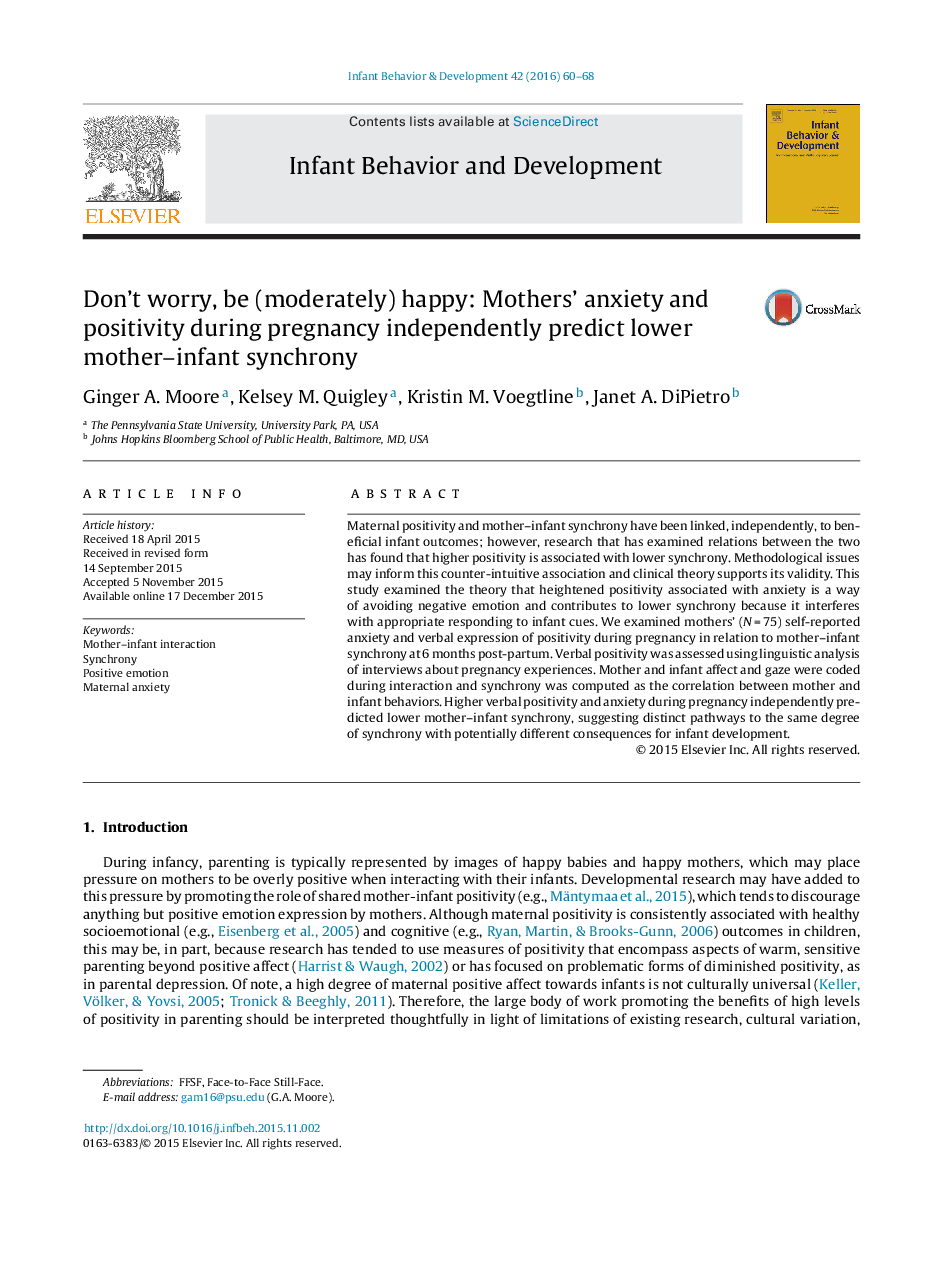| Article ID | Journal | Published Year | Pages | File Type |
|---|---|---|---|---|
| 917143 | Infant Behavior and Development | 2016 | 9 Pages |
•High levels of mothers’ positivity during pregnancy predicted lower mother–infant synchrony at 6 months post-partum.•Maternal pre-partum anxiety and verbal positivity made independent contributions to lower dyadic synchrony.•Independent determinants of synchrony suggest distinct pathways and distinct outcomes related to the same degree of synchrony.•Quality of mother–infant dyadic interaction may be predicted by pre-partum maternal characteristics.
Maternal positivity and mother–infant synchrony have been linked, independently, to beneficial infant outcomes; however, research that has examined relations between the two has found that higher positivity is associated with lower synchrony. Methodological issues may inform this counter-intuitive association and clinical theory supports its validity. This study examined the theory that heightened positivity associated with anxiety is a way of avoiding negative emotion and contributes to lower synchrony because it interferes with appropriate responding to infant cues. We examined mothers’ (N = 75) self-reported anxiety and verbal expression of positivity during pregnancy in relation to mother–infant synchrony at 6 months post-partum. Verbal positivity was assessed using linguistic analysis of interviews about pregnancy experiences. Mother and infant affect and gaze were coded during interaction and synchrony was computed as the correlation between mother and infant behaviors. Higher verbal positivity and anxiety during pregnancy independently predicted lower mother–infant synchrony, suggesting distinct pathways to the same degree of synchrony with potentially different consequences for infant development.
